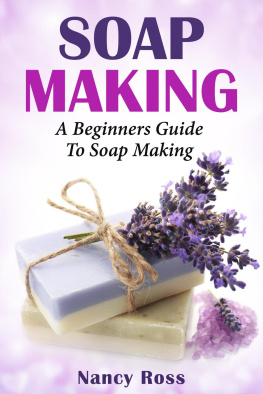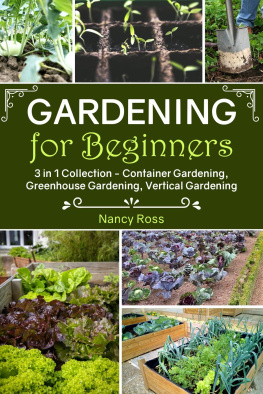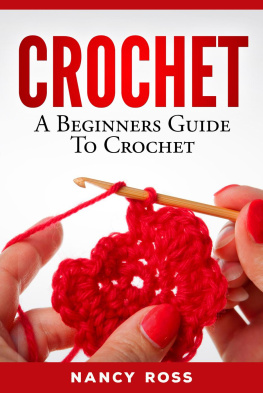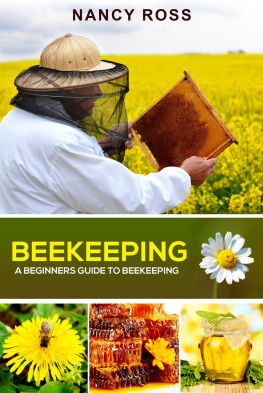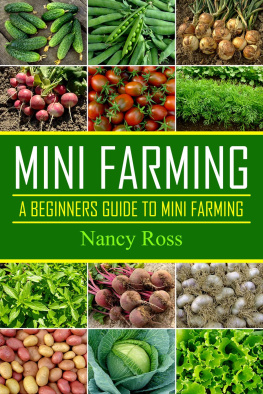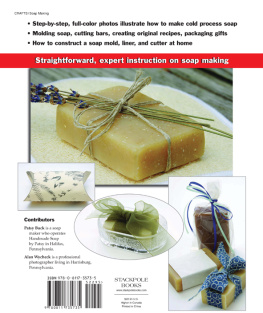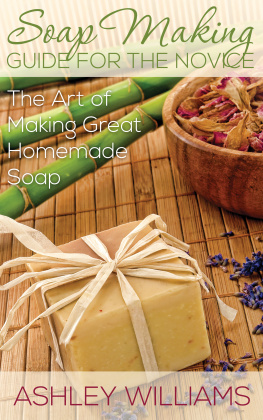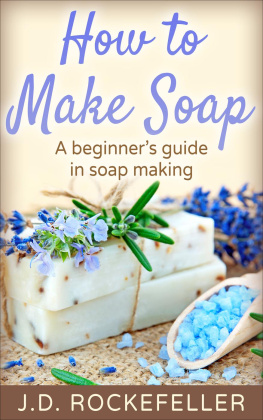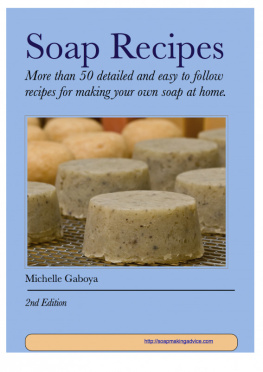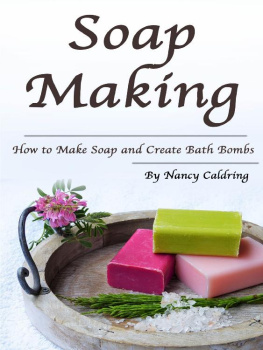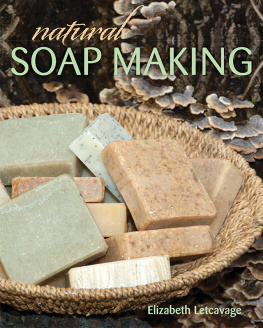Also by Nancy Ross
Gardening: The Complete Guide To Vegetable Gardening For Beginners
Hydroponics: The Complete Guide To Hydroponics For Beginners
Photography for Beginners: The Complete Photography For Beginners Guide
Dog Training: The Complete Guide To Dog Training For Beginners
Herbal Remedies
Marijuana: A Beginners Guide On How To Grow Marijuana
Crockpot
Pie Recipes
Ketogenic Diet
Gardening Collection
Tiny Houses
Backyard Chickens
Homesteading
Mini Farming
Self Sufficiency
Ice Cream Recipes
Whole Food: The Top 65 Recipes for a Whole Foods Diet
Beekeeping: A Beginners Guide To Beekeeping
Crochet: A Beginners Guide To Crochet
Bath Bombs: The Top 15 Bath Bomb Recipes
Soap Making: A Beginners Guide To Soap Making
Air Fryer Cookbook: The Top 48 Air Fryer Recipes
Mediterranean Diet: The Top 47 Mediterranean Diet Recipes
Spiralizer Cookbook: The Top 53 Spiralizer Recipes
Quick and Easy Recipes: 3 in 1 Collection - Crockpot, Air Fryer, and Spiralizer
Diy Projects: 3 in 1 Collection - Bath Bombs, Crocheting, and Soap Making
Alkaline Diet: Alkaline Diet For Beginners Plus the Top 40 Alkaline Recipes
Container Gardening: Container Gardening for Beginners
Special Diet Cooking: 3 in 1 Collection - Ketogenic Diet, Mediterranean Diet, Alkaline Diet
Greenhouse Gardening: Greenhouse Gardening for Beginners
Vertical Gardening: Vertical Gardening for Beginners
Gardening for Beginners: 3 in 1 Collection - Container Gardening, Greenhouse Gardening, Vertical Gardening
Bonsai for Beginners
Orchid Growing for Beginners: A Beginners Starters Guide to Growing Orchids
Tulip Gardening: A Beginners Starters Guide to Growing Tulips
Raising Dairy Goats: A Beginners Starters Guide to Raising Dairy Goats
Raising Beef Cattle: A Beginners Starters Guide to Raising Beef Cattle
Soap Making
A Beginners Guide To Soap Making
Nancy Ross
Table of Contents
Introduction
H ow many times have you headed to the store to buy some soap for your family, or any other beauty product, and just felt frustrated at the selection that you saw there? You most likely saw that there were only a handful of options to choose from in the first place, and most of them were boring with no great scents or colors or make them fun. If you have a skin allergy to an ingredient that is inside of most soaps, the process of finding any soap to use can become more frustrating than before.
This guidebook is going to give you a solution to all of this. Rather than having to rely on the store bought brands of soap, you will be able to pick from a wide variety of options that you can make from home. Inside this guidebook, we are going to spend some time talking about how you can make some of your own soaps at home and have a great time doing it.
We will start off this guidebook with some of the basics of making your own soaps. We will talk about some of the processes that are commonly used at home, such as the cold process, the hot process and the melt and pour process, that help you to make some of your own soaps. Once we are done with that, we will move on to talk more about some of the utensils that you need to make some of your soaps, and how you need to also be careful with the products used to ensure that some, like the lye, dont cause skin irritation while designing the soaps.
Next, we will move on to talking about some of the benefits that come with making your own soaps at home, such as being able to save money, having more options over what goes in the soap, and how it is even safer for you to use. And finally, this guidebook will end with a chapter of some of the best soap recipes that you can use, that are easy to make and also safe on the skin.
Making some of your own soaps at home can be a really rewarding experience. This guidebook is going to give you the basics that you need to get started, even if you dont have experience with doing this in the past. Take a look through this guidebook and see what all you are able to learn about making your own personal soaps at home.
Chapter 1: The Basics of Making Your Own Soap
W hen it comes to making your own soap, there are a few methods that you will be able to use. The nice thing is that the chemical process of each of these methods is going to be pretty similar. You will start out by getting a fat and then treating it with an alkaline solution; the method you use to treat the fat will vary depending the type of products used and the recipe you are going with. Sometimes you will do this by mixing the alkaline solution and the fat together, and other times you will boil together the ingredients before extracting the soap out of the water.
This chemical process is going to be known as saponification. During this process, the fatty acids that are attached to your fats are going to become loose and then reform together into a new substance. This new substance is going to be a combination of glycerin, salts, alkali, and fats. All of these are useful for binding the soap together, helping the body to feel extra moisture and exfoliation, and so much more.
The best ingredient that stays inside the soap when you make it on your own is the glycerin. With most manufactured soaps, this is the first ingredient to go because it is hard to keep in the mixture. The result is that most soaps are missing out on all the moisturizers that come with glycerin, and dry skin and other skin disorders are the ones that will suffer the most.
In addition to adding in the basic alkaline solution and the fat, you can choose to add in some scents in the form of perfumes or the different colors that you would like. These are not required so if you would like to keep things simple and just want to get some of the benefits that come from homemade soap, this would be fine to work with as well. There are so many options that come with making some of your own soap at home that once you give it a try, you will never want to go back to the store bought brands.
The methods of soap making
W hen it comes to making your own soap, there are actually many different processes that you can use to get it done. But for the most part, people are going to choose from the two main options: the cold method or the hot method. Both of these are going to work to combine together the fat and the alkali, but the method that they use to get the water to leave the mixture so that you just get the soap is going to be slightly different. Lets take a look at the different types of soap making that you can choose so that you can choose the one that is right for you.
The cold process method
F irst we will take a look at the cold method. This one is pretty simple, but you will have to pay more attention to it compared to the hot method because it requires more precision. To get started with this method, you will need to pick up the fat and then look to see what the saponification value is of that fat. This is basically the amount of alkali that you will need to use in order to begin treating the fat to make it into soap. Some fats are going to need higher amounts of lye while others would just need a little bit. Your recipe will often make this easier by telling you how much of each product you will need.
One interesting thing to keep in mind is that if you have ever used a soap that felt too itchy or had one that seemed to fall apart, this means that the pH was too high for your skin. Each person is going to have a different amount of pH that they are able to handle, which is why some people are going to be more sensitive to the things they put on their bodies while others would be just fine. The nice thing is that you will get some more control over how much lye will be in the soap. If you are sensitive to this ingredient, you will be able to cut it out a bit and keep the soap healthy for you.

